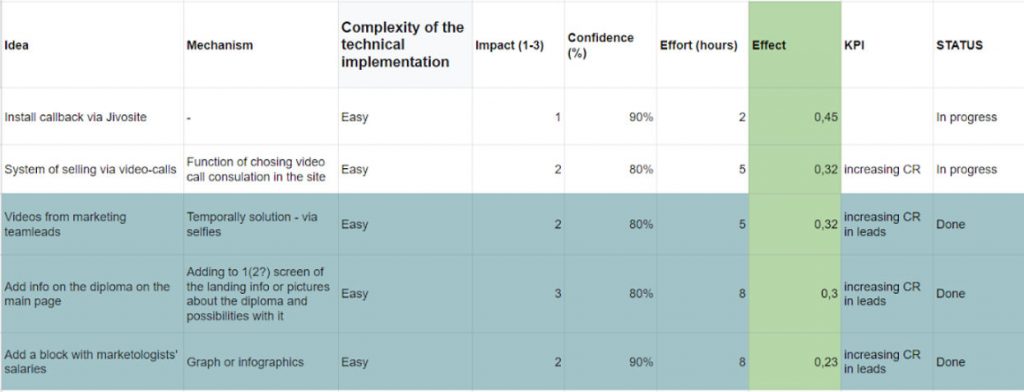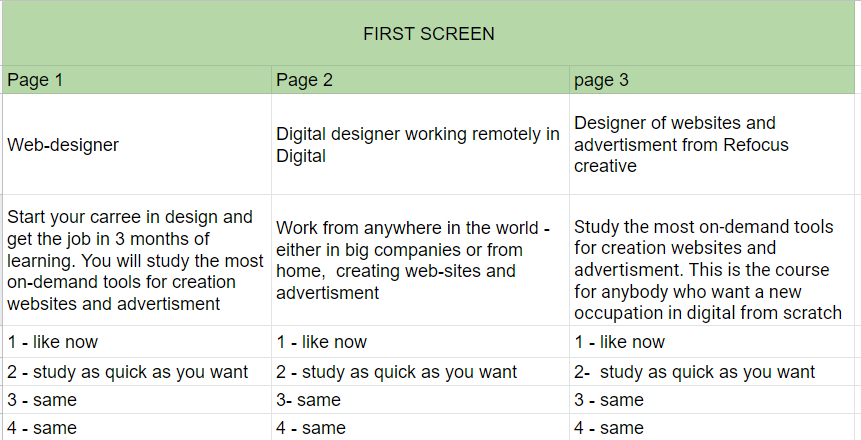Hello, everyone! My name is Roman Kumar Vyas and I’m CEO of Refocus, co-founder of Coding Invaders by MentorsPro, and mentor at 500 startups. As a founder of several international businesses, I have started with a small local start-up.
In this article, I will describe how we have managed to launch a small startup in the international market and increase its revenue 6 times in only one year.
Rule-the-world marketing strategy
Every member of our team is the jack-of-all-trades in marketing. All managers who once launched campaigns in Ads Manager on their own have reached each level of marketing development from scratch, and so now they manage processes.
And not only managers!
If something weird happens tomorrow all our targetologists are unable to do their job, any of the founders will be able to replace them. When we were starting launching the project in India, I was the one who manually set up the target, came up with the creatives and the logic of the landing pages.
Everybody in our team knows the subject. And this is the strength of us. We practically do what we teach others every day.
And here is the list of what we do on the regular basis:
- Analyzing the competitors: not only when we are selling something but on an ongoing basis. We check what other EdTech projects have come up with: what creatives they use, what AB tests they conduct. We look at what works well for leaders of the industry and what are the trends. Using this data, we draw conclusions, test hypotheses, and use the most successful ones.
- Analyzing the audience. We conduct CustDev research, determine the pain of clients using the Jobs-To-Be-Done method. For example, at the moment we are especially interested in the audience of those who want to change their current occupation. We know how to behave with marketers and entrepreneurs because we ourselves are a part of the target audience but this audience is more unknown to us. Now we are studying the pains of cold and warm leads, trying to understand what they lack in our product or in communication strategy
- Exchange experience with colleagues. As an international company, we have links with marketologists from all over the world. We often call each other and share our insights. Of course, it is possible to find people to discuss your business with even at the very beginning.
- Learning. As the official business partner of Facebook, we have access to private training available to us. We precisely use the opportunity to get ourselves acknowledged with all the changes among the first. Moreover, we organize training camps within the team, where the employees share what they know best. This is how we help each other grow faster.
Test & Learn approach

Screenshot from Refocus document on hypotheses’ improvement
Several times per month we meet at meetings where we generate new hypotheses, which are then rated using the ICE system. So we do not test anything randomly, but first of all, try to choose the one that gives the greatest result with the minimum effort.
First of all, we evaluate the complexity of the technical implementation of the hypothesis. We determine whether it is necessary to create new systems for testing or the current resources are sufficient.
The second item to evaluate is the Impact or the contribution of the hypothesis goal achievement. It is necessary to assign the idea a number from 0 to 3. The 3 is something that can completely turn the game around and multiply the result while the 0 is a complete lack of influence on the result.
The third point is our Confidence in the estimates of the impact. This parameter is measured as a percentage – from 0 to 100%.
From 70% to 100% – is possible when we have already conducted such experiments, and they have worked successfully. So, we have representative data on which we can rely.
50% to 70% – is reached when the experiment is based on the best practice that works for one of our competitors.
And anything below 50% is, as a rule, a subjective opinion. Here we discuss and agree on what is worth trying and what is too risky.
Another parameter is Effort or the time in hours that needs to be spent on the implementation of the idea. When all the data is collected, we consider the Effect or the total value, which allows us to make the most objective decision. This indicator is calculated by the formula:
Effect = Impact * Confidence / Effort
Then we form a KPI in order to understand how to evaluate this hypothesis later, fix the person in charge, and look at the result.
We trust only numbers and never criticize anyone for tests that didn’t work out. This is very important for creating an open and free atmosphere in the team: if things were different, no one would simply dare say their proposals out loud. We call this fail-friendly. The most important thing is to never make the same mistake again.
Insight: test products at the positioning level
After sharing experiences with our colleagues from another company, it dawned on us. We decided to try testing the product at the positioning level: come up with several titles for the same course and check which one goes better.
For example, our course in design had 4 different names until we found the most selling one.
We prepared a bunch of the creatives, separated landing pages with different names for each variant, and launched an ABC test. As a result, we focused on what was the most attractive for the users.
This approach helps us save tons of money because we determine the direction and then scale it. Instead, we could continue to work with the original erroneous name, test creatives with it, and reshape the landing page over and over again. But sharing experience has saved us from this mistake.
Nowadays, we decide which new products are worth trying to launch in the very same way. We make the most similar landing pages and creatives, launch ads and look at the reaction. MVP helps not to spend millions on something that is not interesting to the audience.

Customers’ journey
We closely monitor each stage of the customer journey not forgetting to test ad creatives and landing pages. The order of work here is about the same.
First, we analyze the best practices. We look at the competitors: what is their creatives’ structure, what pains they are using, how long the creatives have been using. It’s the same with landing pages: we compile large tables, write out the structure of competitors’ sites in them, and then look at which blocks they have in common and which are the different ones. Based on these findings, we compose the primary structure.
Then we talk with clients, find the audience’s pains, select the answer to them among our USP. For example, one of the biggest pains for an audience of entrepreneurs is making mistakes in marketing strategy and not bringing any new clients. So, in the advertisement, we focus on this problem and propose a solution. In contrast, for B2B marketers, the difficulty is the inability to find new promotion channels – after we learn this, we can use it in the banners.
It is a good practice to ask the target audience what they like and dislike about the site. This kind of research often gives us amazingly useful data. For example, in one of the interviews on our website of the B2B course, we found out the audience’s desire to get information on building communication with clients and finding decision-makers. We finalized the program, focused on the blocks of interest, launched an AB test, and that increased the conversion of this page.
We arrange brainstorms with marketers, targetologists, copywriters, designers where we come up with new formats, approaches, and visuals. Before that, we analyze past creatives, look at CTR, CPL, and CR in order to understand what has worked successfully, what should be optimized, and what should not be used at all. Finally, we rank our ideas and try the best one.
Summary
So, what does it take for a startup to take off? The carefully selected team, good reputation, and well-structured marketing. So, if you already have a team of professionals who want to make the best product – you are halfway there.
And here are some general marketing tips that can increase your revenue by six times or even more.
- Practice makes perfect. The best marketing managers are those who have their own and unique experience in achieving the goals.
- Your competitors have already made their mistakes – learn from them, take the best, and win.
- Every idea can be written by numbers that show its effectiveness. It helps to choose the best opportunity and focus on it.Effect = Impact * Confidence / Effort
- Effective marketing is impossible without constant flow of ideas. Brainstorms, meetings, and exchanging ideas with the colleges are productive ways to get them.
- The formula of the best hypothesis is simple: minimum efforts + greatest potential result. Finding it is not that simple but it might change your growth dramatically.
- Naming matters. What if you change the name of your product and choose the most beloved by the audience?
- Only the clients themselves know what they really need. The best practice to learn is literally interviewing them.
- Test and learn every piece of your marketing strategy. And then test again. And learn again. And still, try one more time. Indeed, practice does make perfect.

